MODULE 1 - SECTION 6 - INTERNAL ANATOMY of the CEREBRAL HEMISPHERE
One of the most difficult topics for students of neuroanatomy to master has to do with the internal anatomy of the cerebral hemispheres. There are actually only a few structures (and names) involved, but the manner in which the brain has developed has caused the relationships between them to be complex. Added to this is the fact that the most convenient way to study the hemisphere involves the use of serial sections - and that no matter what plane of section one picks, the cuts will pass through some structures at odd angles. The end result for the student is confusion which usually does not begin to lift until the last weeks of the course. We hope that by focusing on this subject at the start we will help you avoid this. But, be prepared for some tough going!
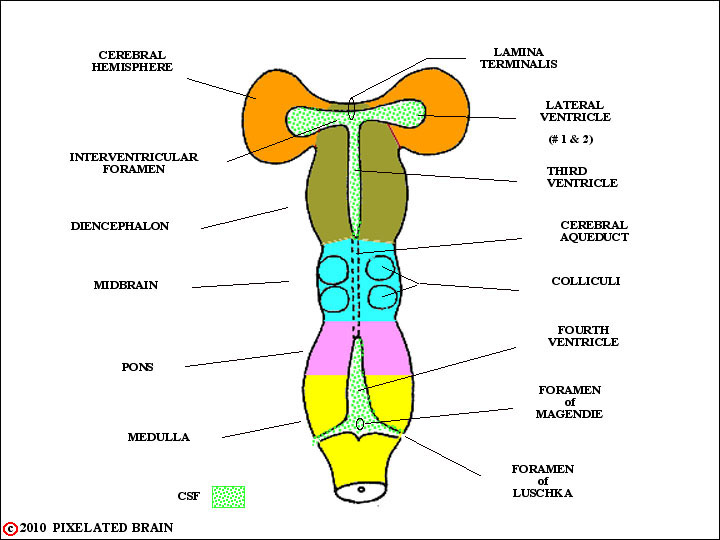
Early in the module we felt obliged to say a little about brain development because we wanted to explain how the ventricular system came to be. So, when we last looked at the developing hemisphere, in this figure, it was just a blister, extending laterally from the diencephalon. In fact, things are more complicated, as shown next, in a schematic frontal section through the hemisphere and diencephalon
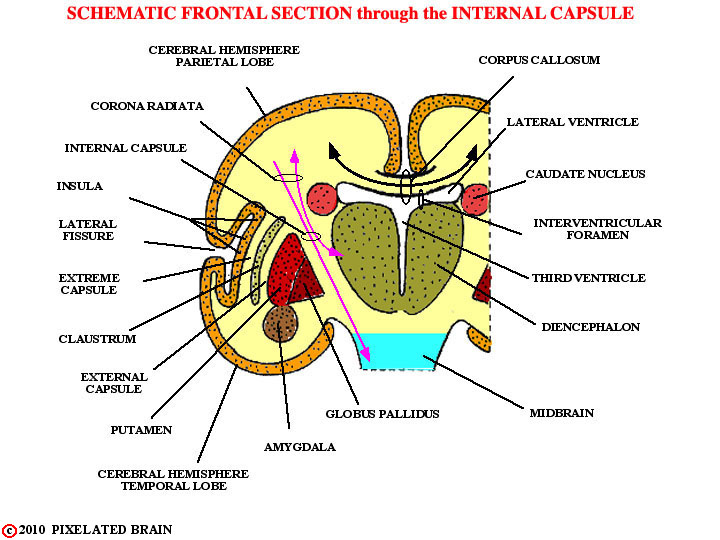
1) the corpus callosum, connecting one cerebral hemisphere with the other and often forming the roof of the lateral ventricle.
2) the internal capsule, which contains some fibers (axons) interconnecting the diencephalon with the cerebral cortex and others which pass from the cortex to more caudal parts of the brainstem and the spinal cord.
3) the corona radiata, which represents the extension of the internal capsule toward the surface of the hemisphere, into the region where the fibers are no longer trapped between the caudate and the lentiform nucleus.
4) the external and extreme capsules, pathways connecting one part of the hemisphere with another and passing on either side of the claustrum.
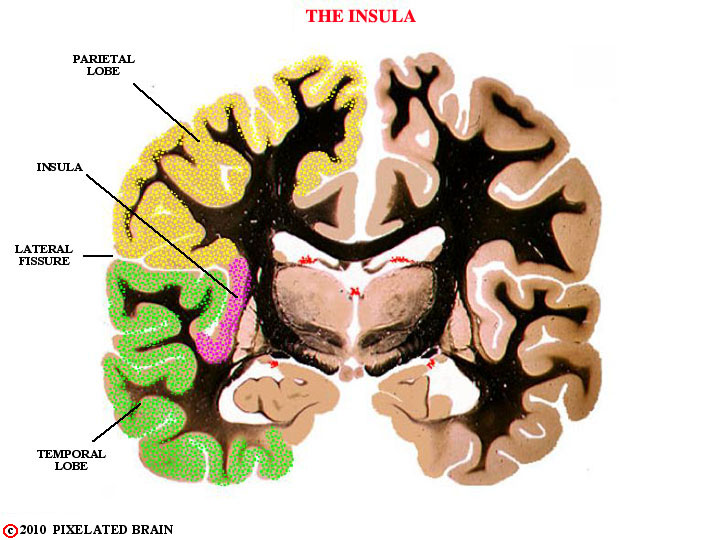

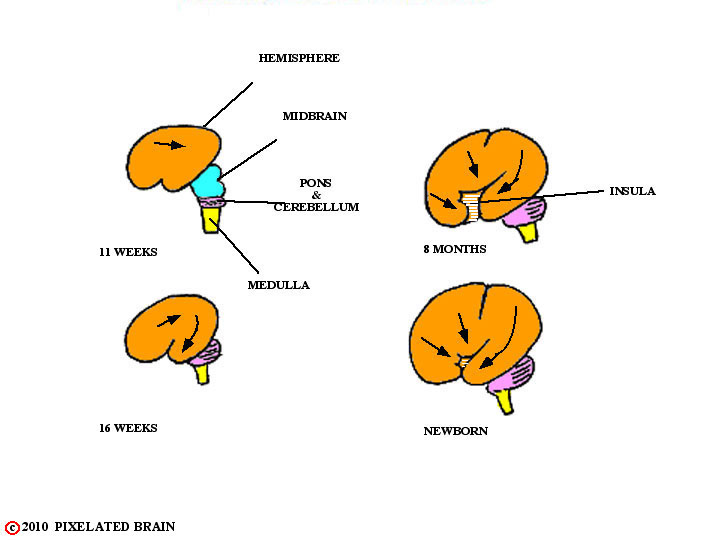
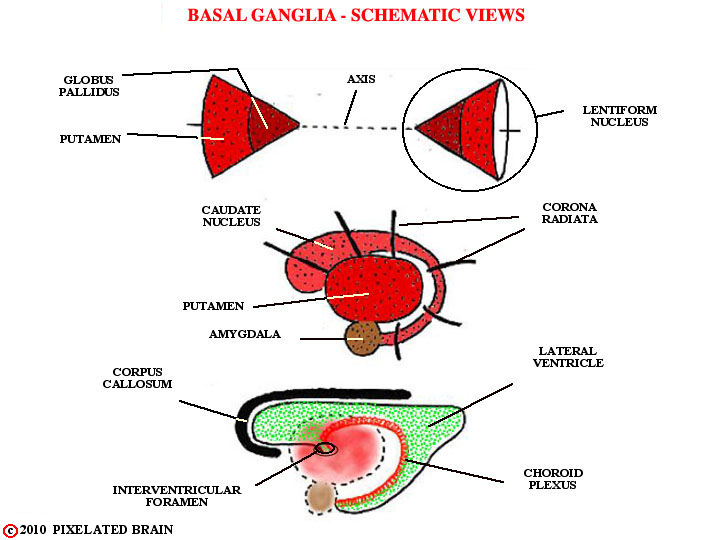
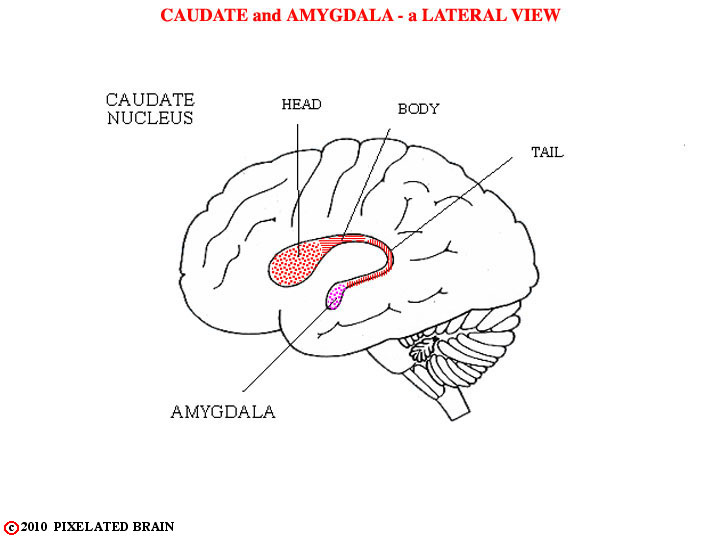
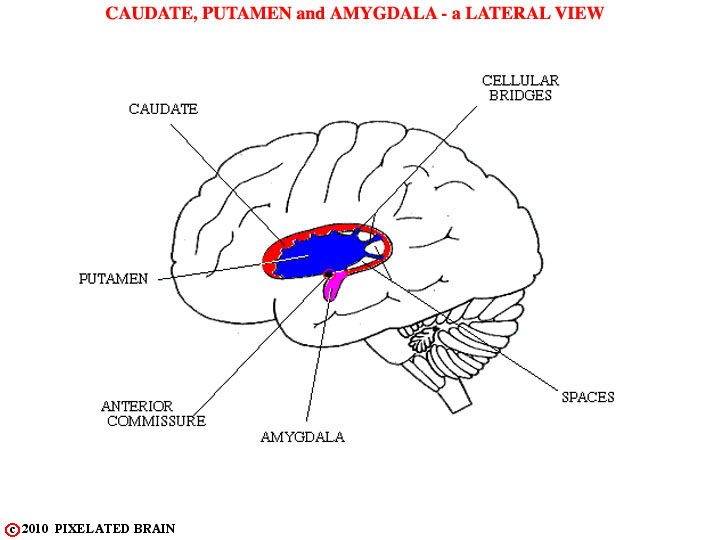

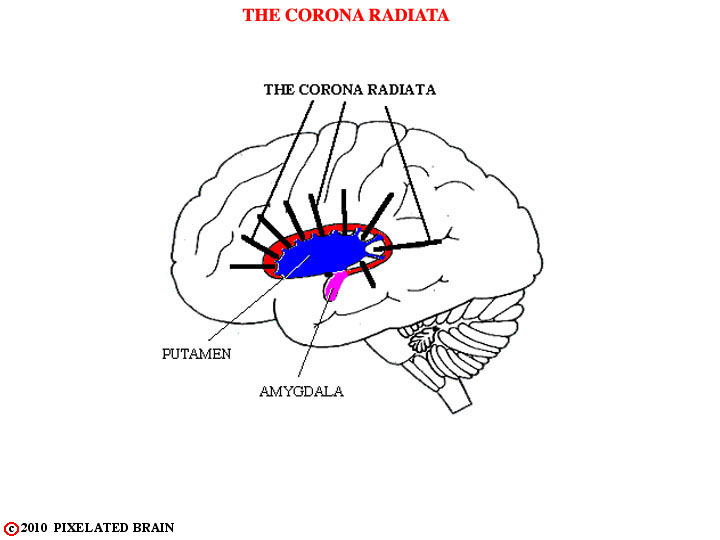
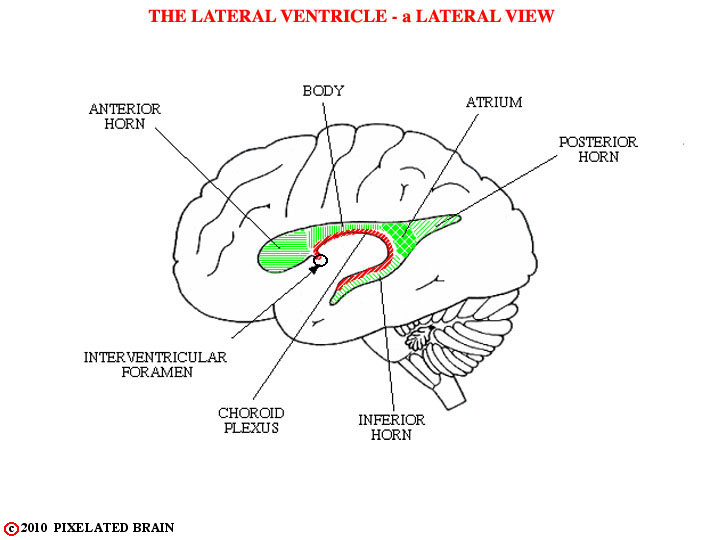
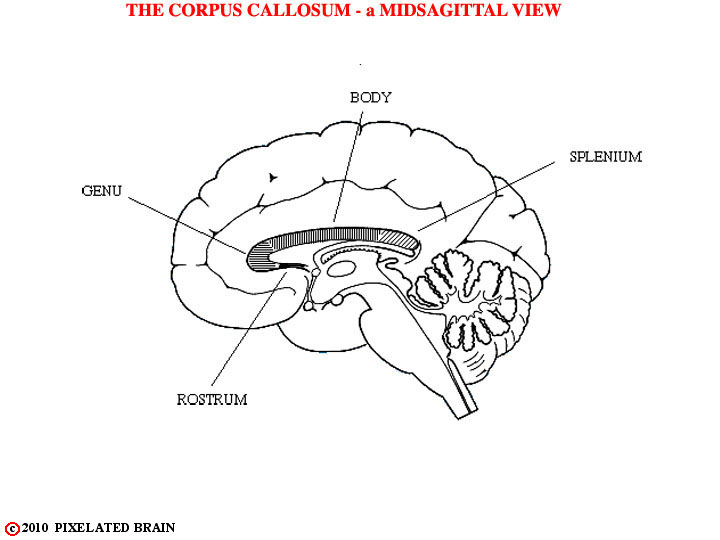
The
The
The
The
The
The
The
The
The
The
The
The
Clearly
The
This
The
The
The
The
The
The
The
The
The
The
The
The
The
The
The
The
The
The
The
The
The
The
The
Clearly